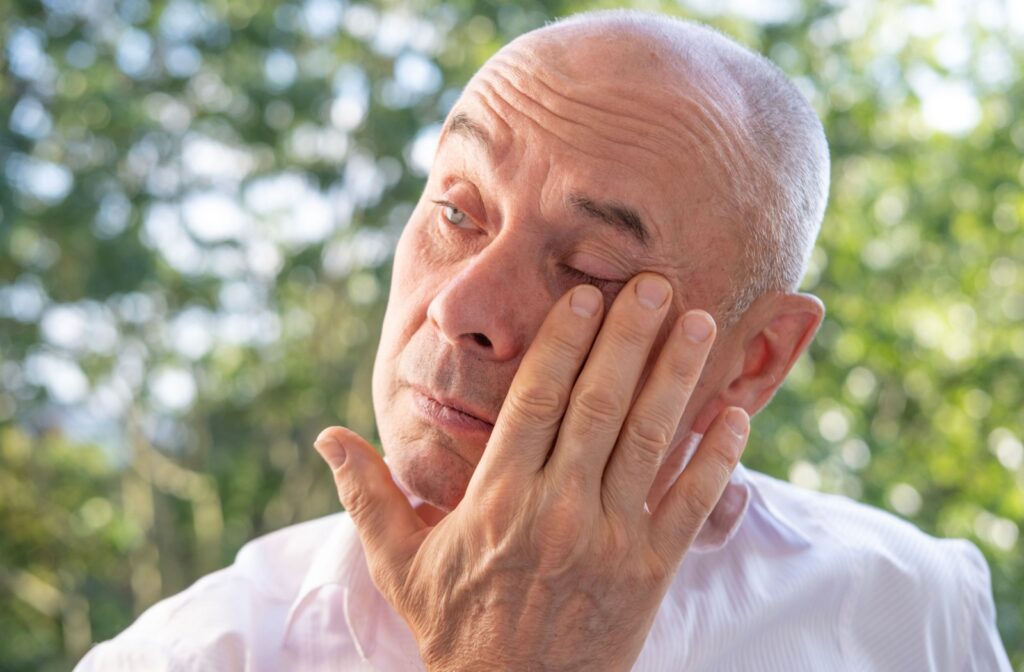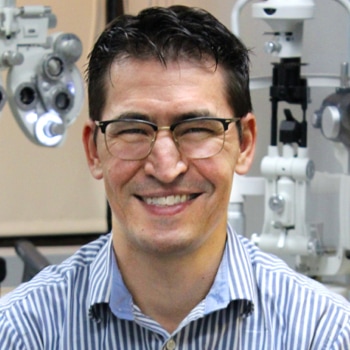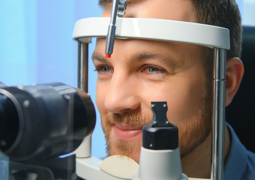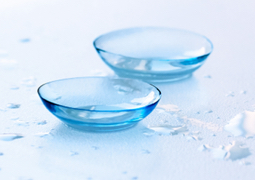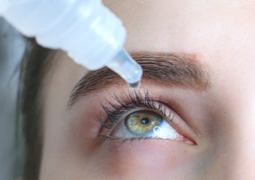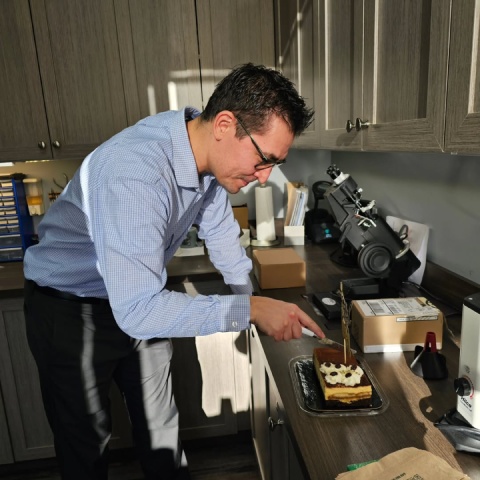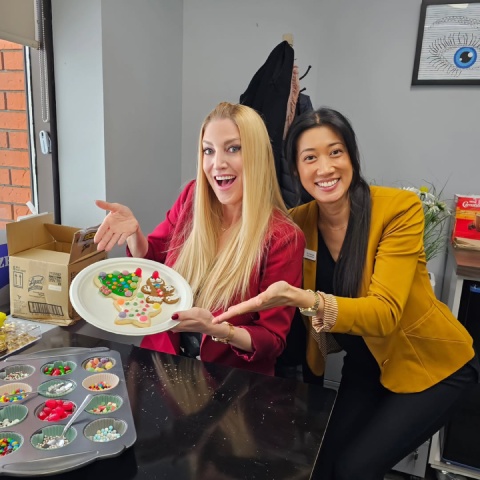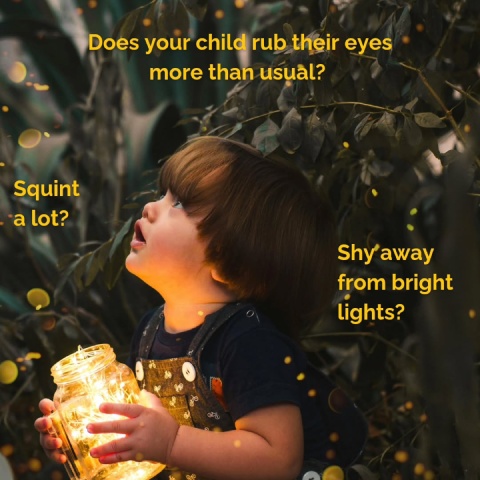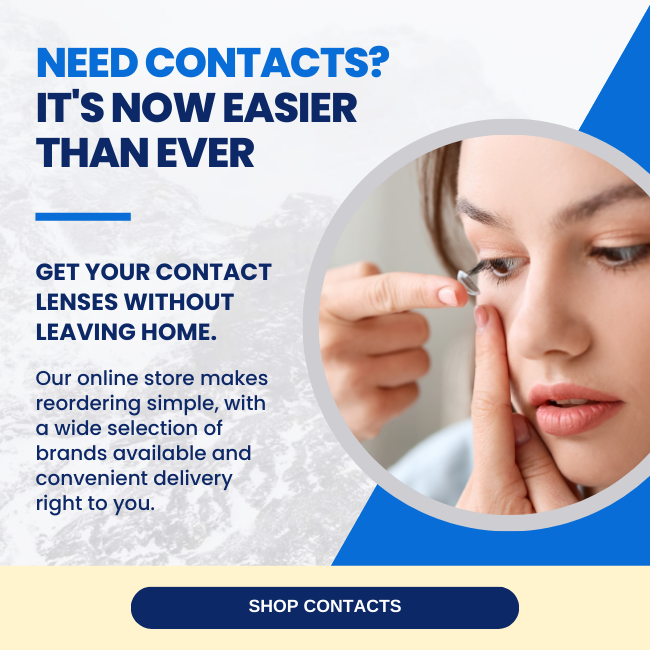We’ve all experienced that uncomfortable sensation of feeling as though something is in our eye. You’re blinking like crazy, sure that there’s a speck stuck in your eye, yet no matter how much you look there’s nothing to be found.
This feeling is often called foreign body sensation and can occur for all sorts of reasons, including dry eyes, corneal scratches, conjunctivitis—or maybe something is actually in your eye. It’s a common irritation that can disrupt your daily activities and cause significant discomfort. Whatever the cause, your optometrist can help you figure it out and get you feeling comfortable again.
What Causes the Feeling of Something in the Eye?
One of the most common causes of feeling like something is in your eye is the presence of a foreign body. This could be anything from a speck of dust to a small insect. The eye’s natural defence mechanisms, such as blinking and tearing, usually manage to remove these irritants.
However, sometimes these particles can get trapped under the eyelid or in the eye’s surface, leading to persistent discomfort.
If it feels like there’s something in your eye, but there isn’t, this is sometimes called foreign body sensation. This can be caused by various conditions or irritations affecting the eye’s surface. It’s a common complaint and can lead to discomfort, redness, and constant blinking as you try to “remove” the perceived object.
Conjunctivitis
Conjunctivitis, or pink eye, is the inflammation of the conjunctiva, the transparent layer covering the white part of your eye and the inside of your eyelids. Viruses, bacteria, or allergies can all cause it, but allergens tend to have a particular ability to create the feeling that something is stuck in your eye.
Treatment varies depending on the cause and may include antihistamines, antibiotics, or antiviral medications. Proper hygiene and avoiding contact with infected individuals can help prevent the spread of viral and bacterial conjunctivitis, while you’ll need to avoid allergens to address eye allergies.
Dry Eye
Dry eye happens when your eyes don’t produce enough tears or they evaporate too quickly. When your eyes aren’t well-lubricated, it can feel like there’s something in your eye even when there isn’t.
Normally, tears form a smooth layer that keeps your eyes comfy and moist. Without this, dry spots create friction with each blink, leading to irritation and that pesky feeling of a phantom eyelash.
Without enough lubrication, the eye’s surface can become inflamed, worsening this sensation. Tackling dry eye symptoms is key to relief. Using artificial tears, cleaning your eyelids, and professional management can help alleviate dry eye symptoms. Your eye doctor can recommend an approach based on the severity of your condition.

Corneal Abrasions
Corneal abrasions are small scratches on your cornea, the eye’s protective layer. They might occur from an accidental poke or when particles like sand or dust become trapped under your eyelid. These injuries can be uncomfortable, often feeling as if something is in your eye.
If you suspect a corneal abrasion, rinse your eye with clean water or saline solution and avoid rubbing it. Contact your eye doctor immediately for an evaluation and appropriate treatment. Don’t ignore the discomfort; early treatment can help prevent complications.
Corneal Ulcers
Corneal ulcers are open sores on the cornea, often due to infections. These infections could be caused by:
- Prolonged contact lens use
- Eye injuries
- Immune system problems
They can often feel like something is stuck in your eye, with symptoms like redness, discharge, and blurred vision. It’s essential to get medical help quickly if you suspect you have an ulcer to prevent serious complications or permanent vision damage.
Blepharitis
Blepharitis occurs when your eyelids become inflamed, often due to bacteria and debris collecting along the base of your eyelashes. This inflammation results in itching, burning, and a gritty sensation which feels like having something in your eye. It’s also a key factor in dry eye.
Maintaining good eyelid hygiene is crucial for managing blepharitis. Regularly clean your eyelids with a mild cleanser to help alleviate symptoms and prevent flare-ups. Your eye doctor might also suggest treatments like antibiotics or steroid drops to better control inflammation.
When to Seek Professional Eye Care
If it feels like something’s stuck in your eye for more than a day or 2, it’s a good idea to get it checked out by your optometrist. If you start experiencing sharp pain, intense redness, or notice any changes in your vision, don’t wait—seek medical help immediately.
Ongoing discomfort could be warning signs of more serious issues like corneal abrasions or infections that need to be treated right away.
If this feeling keeps recurring, that could also be a reason to seek professional care. It could be due to issues like chronic dry eye or recurring allergies. An eye doctor can help figure out what’s causing it and recommend treatments to keep things under control.
Your Path to Comfortable Eyes
Feeling like something is stuck in your eye can be more than just an annoyance; it often signals an underlying issue that needs attention. Quick action and professional advice are important for keeping your eyes healthy.
At Calgary Family Eye Doctors, we focus on offering proactive care for everyone. If something feels off with your eyes, consider booking an appointment with us. We’re here to help keep your eyes feeling comfortable!


